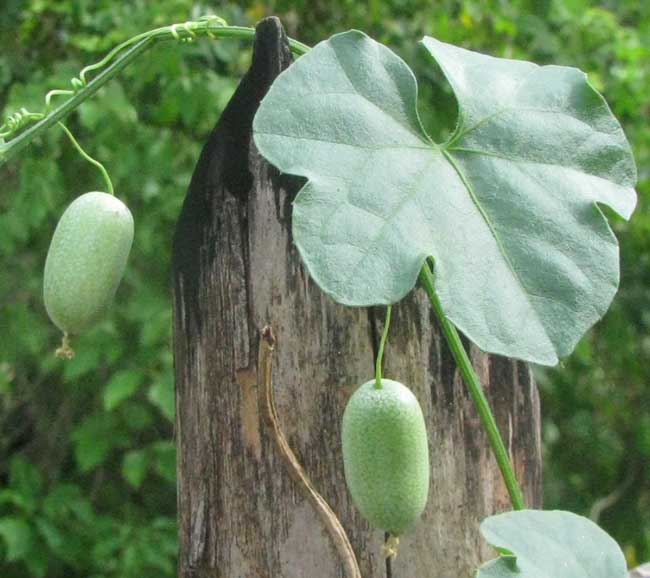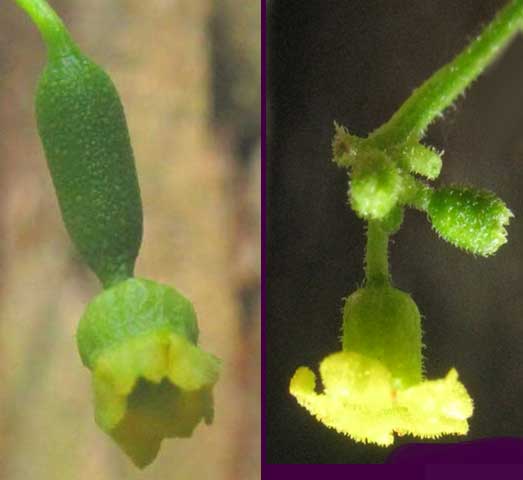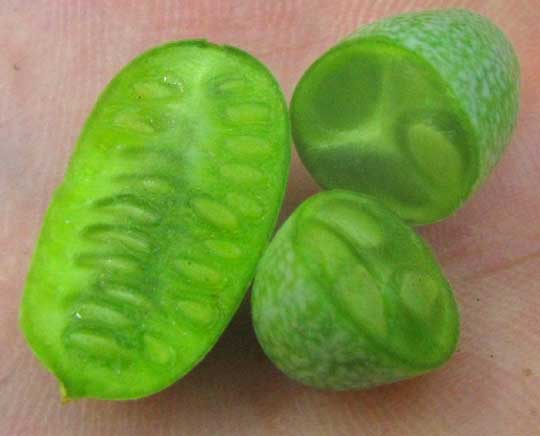Excerpts from Jim Conrad's
Naturalist Newsletter

from the March 18, 2012 Newsletter issued from Hacienda Chichen Resort beside Chichén Itzá Ruins; limestone bedrock; elevation ~39m (~128ft), N20.675°, W88.569°; central Yucatán state, MÉXICO
MOUSE MELON
Twining up the rough poles forming the walls of both the outside shower and hut there's a delicate-looking vine with slender, curling tendrils, English-Ivy-like leaves and many flowers and fruits, as shown above. The vine bears both male and female flowers. You can see a female one on the left, male on the right, below:

The big difference between those two flowers is that the green calyx and yellow corolla of the female flower on the left arise from the end of an oblong ovary -- the future fruit -- while the male flower on the right arises directly from a slender pedicel. The female flower, then, is a good example of a flower with an " inferior ovary" -- an ovary with the calyx, corolla and stamens arising above it, instead of below it, as in more commonly encountered "superior ovaries." An immature fruit is sliced open below:

That looks a lot like a ¾-inch long (20mm) cucumber for a good reason: The vine is a member of the Cucumber Family. It's MELOTHRIA PENDULA, which goes by such English names as Guadeloupe Cucumber, Creeping Cucumber, Squirting Cucumber, Melonette and, my favorite, Mouse Melon. It occurs throughout tropical and subtropical America, including the US Southeast.